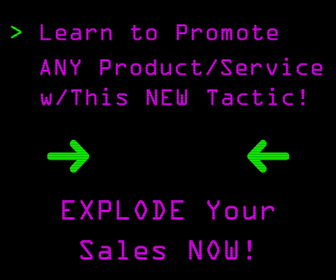People tend to think of creativity and productivity as a dichotomy. They conceptualize them as things that are opposed to one another, always butting heads, and hard to balance.
But it doesn't need to be that way.
Being productive doesn't mean forgoing any semblance of creativity.
And at the same time, being creative doesn't mean lounging around until inspiration strikes, letting due dates whiz over your head on a daily basis.
There's a balance.
Not just a balance, but an outright synergy.
Thinking in terms of “creativity versus productivity” isn't the right strategy.
Instead, it makes more sense to think of them as two things that work together and go hand in hand.
A recent blog post from The Content Marketing Institute makes an unusual but compelling argument: sometimes, certain kinds of distractions in the workplace can actually be a good thing.
Micromanagement and a sweatshop atmosphere may work in some settings, but for creative work — including marketers, copywriters, programmers, and anyone else who generates new ideas for a living — it's counterproductive.
You need to break things up.
You need to introduce new stimuli if you want to inspire new ideas.
Make room for creativity-feeding distractions
While Lean Sigma Six project management is a popular option for cutting costs and inefficiencies in businesses, it doesn’t quite work for creative pursuits.
In fact, business psychologist Craig Knight explained to us how research shows lean work spaces depress key work variables – including productivity.
“No animal, not just homo sapiens, thrives in a psychologically impoverished, high-surveillance space,” he said. “A rat in a lean cage, a chimpanzee in a lean enclosure, and a human in a lean office are all beasts at their lowest ebbs.”
Certain types of distraction can contribute to the creative process.
An illustration professor of mine was fond of saying, “You cannot create in a vacuum.”
While I know some physicists would argue the scientific validity of this statement, it is certainly true for creativity.
“Good” distractions lend inspiration, give your hardworking brain a break, and provide material from which to draw inspiration for your next piece of content.
If you visited the work spaces of the special effects artists who fuel the top-grossing sci-fi summer blockbusters – perhaps the most insanely talented but unrecognized creatives on the planet – you might think you took a wrong turn into the studio’s junk closet.
The walls are plastered with movie posters, album covers, and disembodied ghoul heads.
Shelves overflow with latex appendages, action figures, clusters of paper clips, and modelling clay transformed into miniature monsters in moments of boredom.
Just like rats are happier “scampering under the floorboards, living in a nest of old socks, than living in cages,” humans are happier, and more productive, when given freedom to define their own creative environment.
Knight summed it up, “Allow humans to develop their own space and – compared to a lean space – well-being can increase by up to 40%, productivity by up to 32%.”
You can find more great tips for balancing productivity with creativity over at The Content Marketing Institute.
CHALLENGE Yourself to Profit!
Free Download: Build Your Profit-Generating Online Business With This Free Blueprint
Sign Up, follow the easy steps and You'll get the tactics, strategies & techniques needed to create your online profit stream. It's free!



